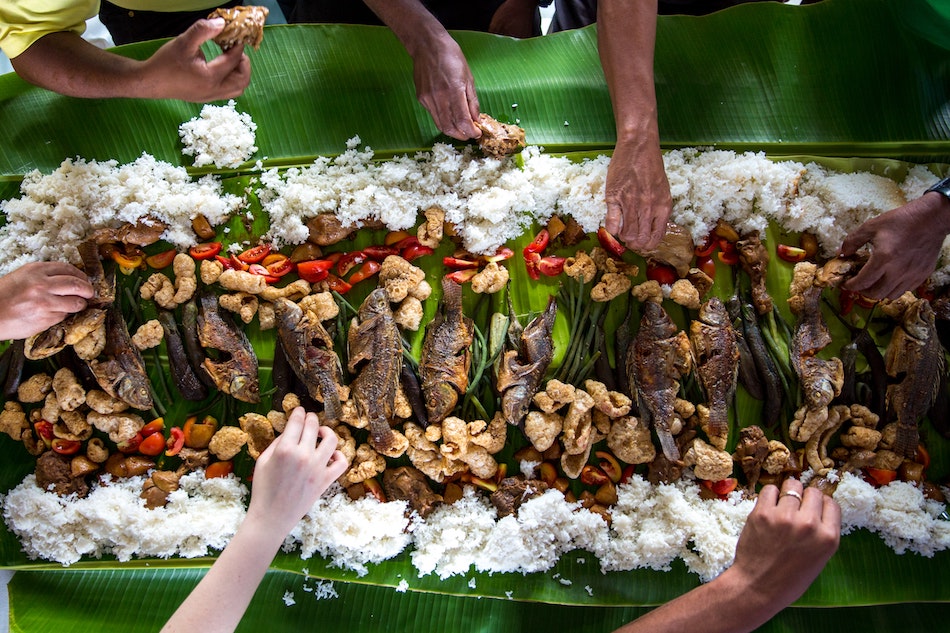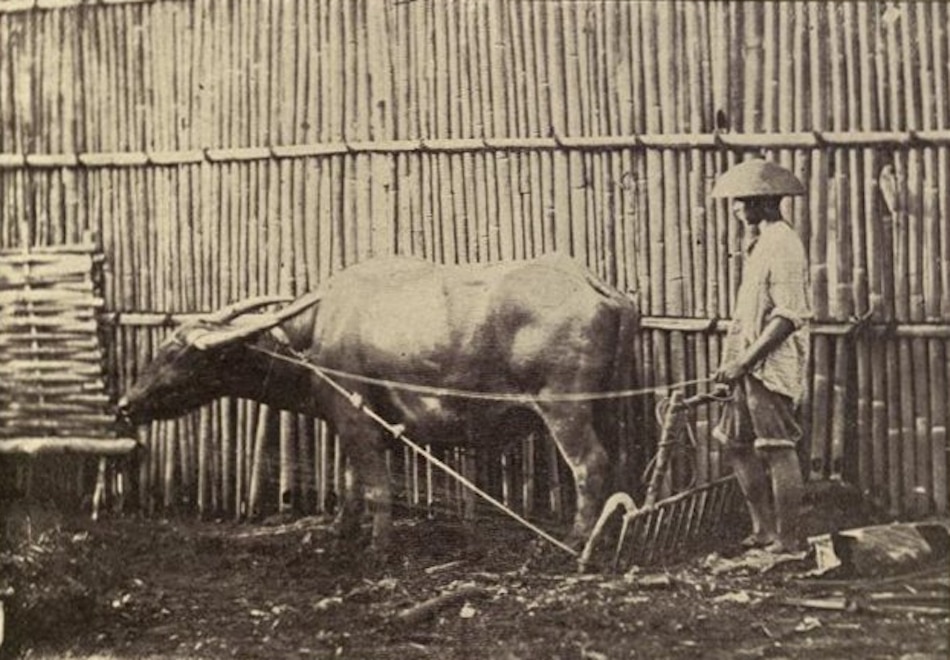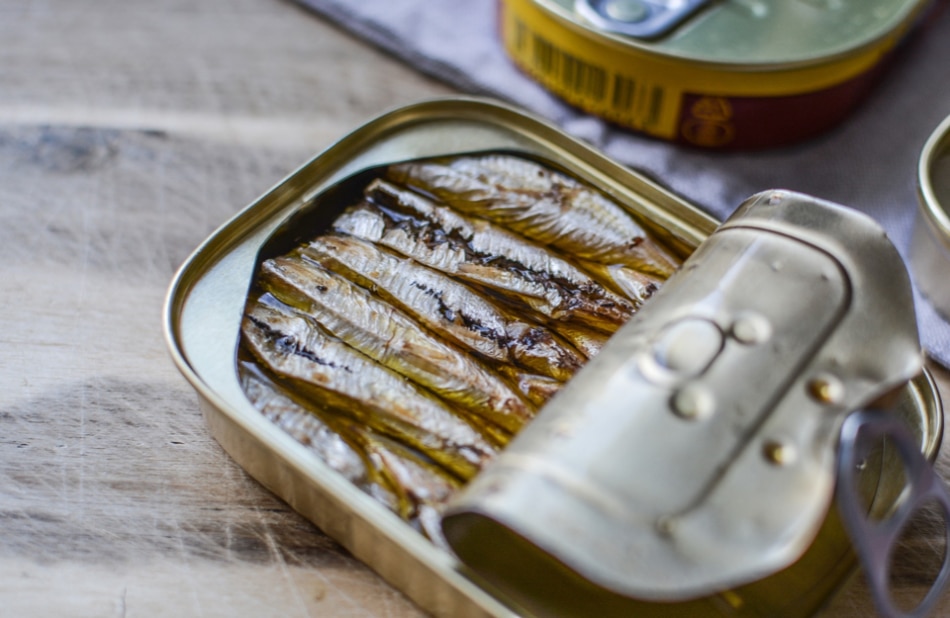What brought about the Filipino’s love affair with rice, according to a food historian | ABS-CBN
ADVERTISEMENT

Welcome, Kapamilya! We use cookies to improve your browsing experience. Continuing to use this site means you agree to our use of cookies. Tell me more!
What brought about the Filipino’s love affair with rice, according to a food historian
What brought about the Filipino’s love affair with rice, according to a food historian
ANCX Staff
Published Apr 07, 2022 12:33 PM PHT
|
Updated Apr 11, 2022 07:20 AM PHT
Ever wondered why we Filipinos eat the way we do? How and why we have adopted certain food-making habits, how we became a rice-eating nation, and why we tend to stock up on de lata for emergency?
The answers to these questions were among the highlights of a recent talk organized by the Ateneo Department of Interdisciplinary Studies to mark Filipino Food Month. Food historian and heritage advocate Felice Prudente Sta. Maria shared little-known facts and trivia about our past influencing how we consume certain foods and why.
“What we eat today is influenced by food security strategies that have become part of Philippine culture over millennia,” said the author of numerous books, including last year’s sumptuous “Pigafetta’s Philippine Picnic: Culinary Encounters During the First Circumnavigation, 1519-1522.”
Ever wondered why we Filipinos eat the way we do? How and why we have adopted certain food-making habits, how we became a rice-eating nation, and why we tend to stock up on de lata for emergency?
The answers to these questions were among the highlights of a recent talk organized by the Ateneo Department of Interdisciplinary Studies to mark Filipino Food Month. Food historian and heritage advocate Felice Prudente Sta. Maria shared little-known facts and trivia about our past influencing how we consume certain foods and why.
“What we eat today is influenced by food security strategies that have become part of Philippine culture over millennia,” said the author of numerous books, including last year’s sumptuous “Pigafetta’s Philippine Picnic: Culinary Encounters During the First Circumnavigation, 1519-1522.”
We ate rhinos
We ate rhinos
According to Sta. Maria’s studies, archaeological findings tell us the earliest food consumed by homo species in Kalinga about 750,000 years ago was butchered meat of a now-extinct rhinoceros specie. Meanwhile, some 30,500 years ago, residents of Tabon Cave in Palawan ate roasted bird, bats, and small animals.
It appears that early Filipinos were also fond of root crops, particularly taro or gabi. The Archaeological Society of Ille Cave in Palawan has found remains of this plant species that are over 11,000 years old.
According to Sta. Maria’s studies, archaeological findings tell us the earliest food consumed by homo species in Kalinga about 750,000 years ago was butchered meat of a now-extinct rhinoceros specie. Meanwhile, some 30,500 years ago, residents of Tabon Cave in Palawan ate roasted bird, bats, and small animals.
It appears that early Filipinos were also fond of root crops, particularly taro or gabi. The Archaeological Society of Ille Cave in Palawan has found remains of this plant species that are over 11,000 years old.
Different people inhabited the Philippine archipelago through the years, and naturally added culinary flora and fauna from their place of origin. In 1521, when Magellan’s circumnavigation and of the world found its way to Visayas, they brought foods that originated in the Indo-Malaysian Biographical Ecozone. These include banana, citrus, ginger, sugarcane and coconut.
Different people inhabited the Philippine archipelago through the years, and naturally added culinary flora and fauna from their place of origin. In 1521, when Magellan’s circumnavigation and of the world found its way to Visayas, they brought foods that originated in the Indo-Malaysian Biographical Ecozone. These include banana, citrus, ginger, sugarcane and coconut.
Other foods Magellan’s men found were likely introduced and circulated by Austronesian immigrants whose ancestors were from Southern China. They introduced rice as well as other cereals such as millet, sorghum and panicum. Wheat grew well in some parts of the Philippines. It’s one of the main ingredients used to make bizcocho—the Spaniards’ key source of sustenance during galleon voyages and maritime wars.
Other foods Magellan’s men found were likely introduced and circulated by Austronesian immigrants whose ancestors were from Southern China. They introduced rice as well as other cereals such as millet, sorghum and panicum. Wheat grew well in some parts of the Philippines. It’s one of the main ingredients used to make bizcocho—the Spaniards’ key source of sustenance during galleon voyages and maritime wars.
ADVERTISEMENT
Rice to the occasion
Rice to the occasion
How did we end up giving so much importance to rice? “Rice was a prestige good, because it was what was offered to the pagan gods,” said Sta. Maria, referring to the practice of Ifugaos. Even during Magellan’s time, she added, rice was considered an important commodity that was included as ceremonial gifts.
How did we end up giving so much importance to rice? “Rice was a prestige good, because it was what was offered to the pagan gods,” said Sta. Maria, referring to the practice of Ifugaos. Even during Magellan’s time, she added, rice was considered an important commodity that was included as ceremonial gifts.
Since rice was considered “prestige food,” it was not eaten as part of Filipinos’ everyday meals back in the day. Our ancestors typically ate sweet potato or camote, yam, and Mexican corn. It appears that we got our rice-eating habits from the Southern part of China, whose people considered this cereal a staple food since the 1300s to the 1400s.
Sta. Maria said it’s not at all surprising that Filipinos eventually became rice eaters because we are neighbors with rice bowl countries in the Asean region. According to IRRI, Thailand and Vietnam remain to be two of the world’s largest rice exporters, making the region a major rice bowl.
Since rice was considered “prestige food,” it was not eaten as part of Filipinos’ everyday meals back in the day. Our ancestors typically ate sweet potato or camote, yam, and Mexican corn. It appears that we got our rice-eating habits from the Southern part of China, whose people considered this cereal a staple food since the 1300s to the 1400s.
Sta. Maria said it’s not at all surprising that Filipinos eventually became rice eaters because we are neighbors with rice bowl countries in the Asean region. According to IRRI, Thailand and Vietnam remain to be two of the world’s largest rice exporters, making the region a major rice bowl.
But how come other Asian nations like Japan and China use chopsticks eating their rice while we use our hands? There are generally two kinds of rice—the sticky kind (Japonica) and the not so sticky one (Indica), which Filipinos are more used to. Apparently, our Asian folks thought of inventing the chopsticks since their rice is sticky. Whereas Filipinos thought of using their fingers—note, not the hands—to keep the grains together.
But how come other Asian nations like Japan and China use chopsticks eating their rice while we use our hands? There are generally two kinds of rice—the sticky kind (Japonica) and the not so sticky one (Indica), which Filipinos are more used to. Apparently, our Asian folks thought of inventing the chopsticks since their rice is sticky. Whereas Filipinos thought of using their fingers—note, not the hands—to keep the grains together.
There is an ethical way of eating rice that Pinoys may have already forgotten because of the kamayan concept, offered Sta. Maria. The proper way to do it is to take a little bit of the rice, compress it and form a little ball—you must never go beyond the second line of your tallest finger and never shove anything beyond that—put the rice at the tip of your fingers, then with your thumb, very gracefully push the rice to your mouth. Who knew kamayan can be elegant?
There is an ethical way of eating rice that Pinoys may have already forgotten because of the kamayan concept, offered Sta. Maria. The proper way to do it is to take a little bit of the rice, compress it and form a little ball—you must never go beyond the second line of your tallest finger and never shove anything beyond that—put the rice at the tip of your fingers, then with your thumb, very gracefully push the rice to your mouth. Who knew kamayan can be elegant?
Feed the Spanish
Feed the Spanish
“During its start as a colony, the Philippines was dubbed a hardship post. There was a lack of food because it was mostly uncultivated wilderness,” said Sta. Maria. To prevent hunger, our Spanish colonizers implemented a food quota. Indios were obligated to feed the Spanish on a rotational basis. Penalties, which included fines and public lashing, were awarded to those who failed to comply.
An annual tribute was also paid to the Spanish king, who owned all the colonies’ land and natural resources. Families were assigned lots to farm, and had to pay a tribute of up to 10 reales (12.5 centavos per real), or over a hundred gantas of rice. Eggs, venison and other hunted meat, domesticated pig and native wine were accepted as tributes. Filipinos were also required to raise fowl and swine as penalty or fine.
“The goal was food self-sufficiency for every parish pueblo—food to eat and food to pay as tribute,” said Sta. Maria. To increase rice yield, missionaries introduced new agricultural tools like the southern Chinese plow pulled by a carabao. In 1789, the government required communities to raise wheat, rice, corn, vegetables and other useful plants.
Since supplies for Acapulco-bound galleons had to be edible up to eight months, Filipinos learned to prepare emergency food supplies. These include bilimbi (kalamias) sweets and jams in jars, sea biscuits called bizcocho and broas, cow fat, dried fish, lime for betelnut chew, meat (beef tapa preferred), rice (white without husk), vinegar made from tuba in jars, and native wine in jars. Food quotas established the kinds of flora and fauna that Filipinos grew for centuries.
“During its start as a colony, the Philippines was dubbed a hardship post. There was a lack of food because it was mostly uncultivated wilderness,” said Sta. Maria. To prevent hunger, our Spanish colonizers implemented a food quota. Indios were obligated to feed the Spanish on a rotational basis. Penalties, which included fines and public lashing, were awarded to those who failed to comply.
An annual tribute was also paid to the Spanish king, who owned all the colonies’ land and natural resources. Families were assigned lots to farm, and had to pay a tribute of up to 10 reales (12.5 centavos per real), or over a hundred gantas of rice. Eggs, venison and other hunted meat, domesticated pig and native wine were accepted as tributes. Filipinos were also required to raise fowl and swine as penalty or fine.
“The goal was food self-sufficiency for every parish pueblo—food to eat and food to pay as tribute,” said Sta. Maria. To increase rice yield, missionaries introduced new agricultural tools like the southern Chinese plow pulled by a carabao. In 1789, the government required communities to raise wheat, rice, corn, vegetables and other useful plants.
Since supplies for Acapulco-bound galleons had to be edible up to eight months, Filipinos learned to prepare emergency food supplies. These include bilimbi (kalamias) sweets and jams in jars, sea biscuits called bizcocho and broas, cow fat, dried fish, lime for betelnut chew, meat (beef tapa preferred), rice (white without husk), vinegar made from tuba in jars, and native wine in jars. Food quotas established the kinds of flora and fauna that Filipinos grew for centuries.
Following dietary needs
Following dietary needs
Philippine population grew over time—from 1.8 million at the start of the Spanish colonization to 16 million by 1939. To provide ample food supply, the Commonwealth Government urged public and private partnerships to feed the colony.
Philippine population grew over time—from 1.8 million at the start of the Spanish colonization to 16 million by 1939. To provide ample food supply, the Commonwealth Government urged public and private partnerships to feed the colony.
Science was applied to agriculture, husbandry, and food preservation. Food production was industrialized to expand the carrying capacity of life-sustaining resources.
Nutritional science identified milk as essential component to keep children and adults strong. Whether fresh, evaporated, condensed, or powdered, milk became the new essential. Meanwhile, nutritionists found common meals to be lacking in nutrients. So public and private sectors promoted farming and eating vegetables.
The Philippines was identified as food deficient, which made it a lucrative new market for American food products such as canned goods. But to minimize our spending on imported food, the Commonwealth Government initiated food-making as a home business, and started the first food canning factories
Science was applied to agriculture, husbandry, and food preservation. Food production was industrialized to expand the carrying capacity of life-sustaining resources.
Nutritional science identified milk as essential component to keep children and adults strong. Whether fresh, evaporated, condensed, or powdered, milk became the new essential. Meanwhile, nutritionists found common meals to be lacking in nutrients. So public and private sectors promoted farming and eating vegetables.
The Philippines was identified as food deficient, which made it a lucrative new market for American food products such as canned goods. But to minimize our spending on imported food, the Commonwealth Government initiated food-making as a home business, and started the first food canning factories
Read More:
anc
ancx
ancx.ph
abs-cbn
abs-cbn news
food and drink
features
rice
felice prudente sta. maria
filipino food month 2022
ADVERTISEMENT
ADVERTISEMENT








